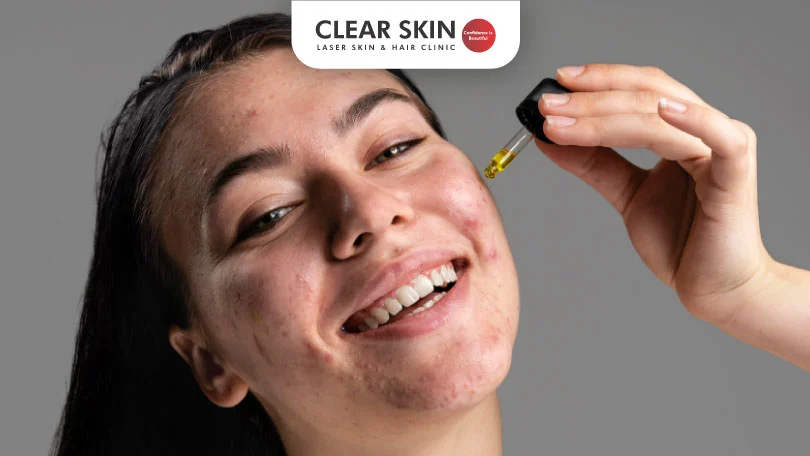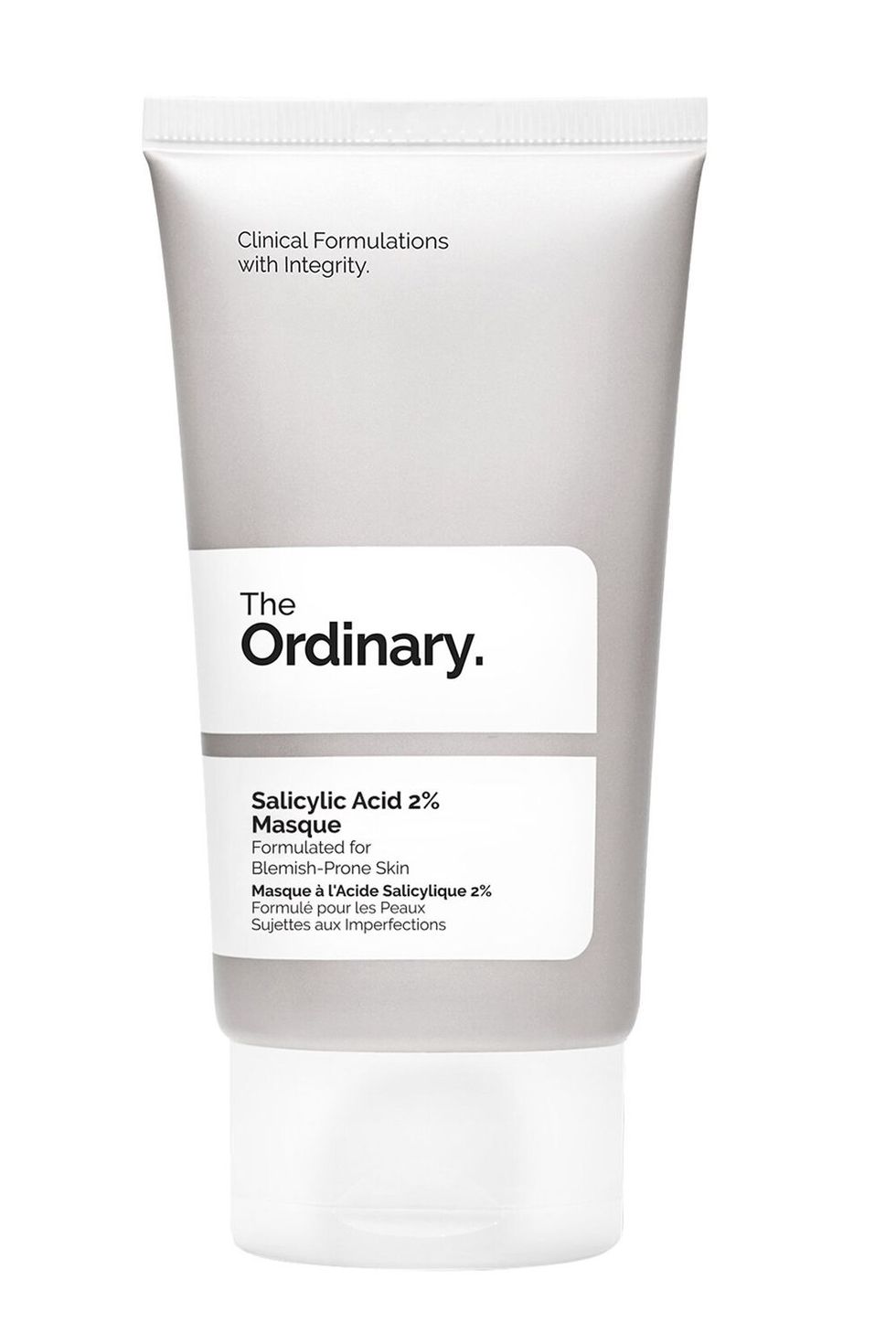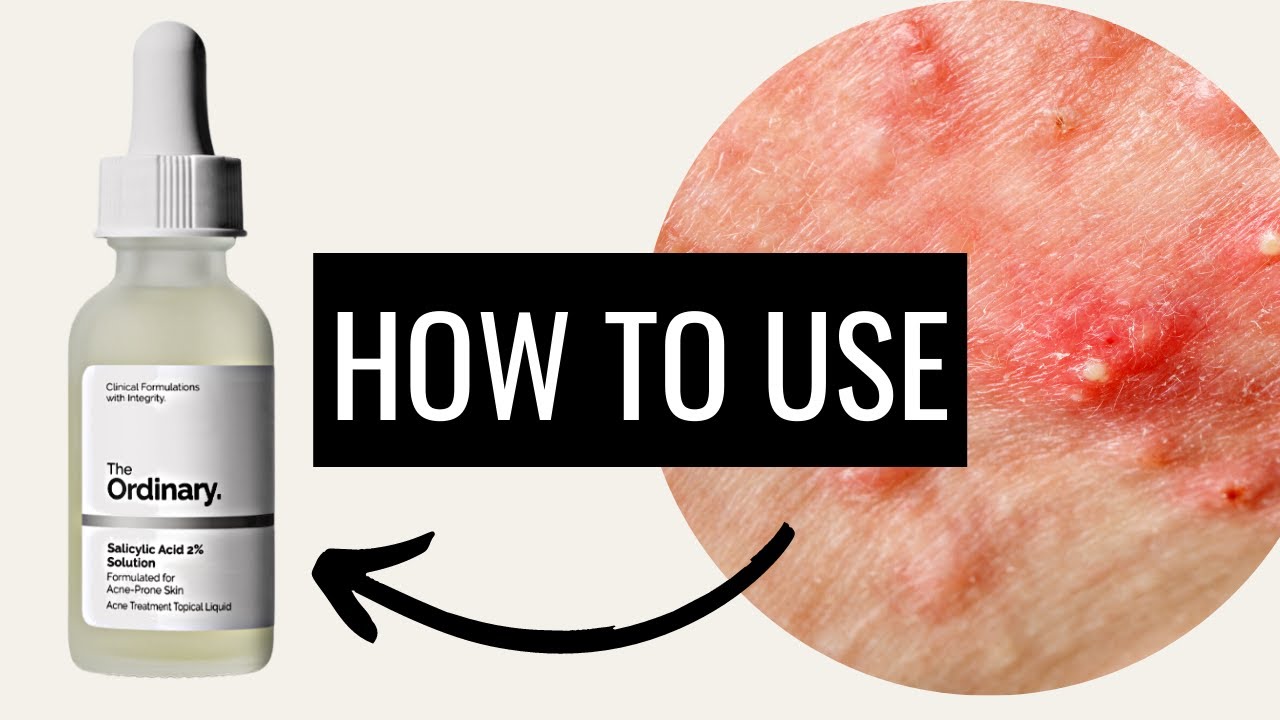The best way to use salicylic acid for acne is to apply it directly to the affected area after cleansing. Choose a product with a concentration suitable for your skin type.
Salicylic acid is a powerhouse ingredient for combating acne, known for its ability to penetrate deep into pores and dissolve excess sebum and dead skin cells. It’s a type of beta-hydroxy acid (BHA) that offers exfoliating properties, which can lead to clearer skin.
When incorporating salicylic acid into your skincare routine, it’s essential to start with a lower concentration to assess your skin’s tolerance. Typically, over-the-counter treatments range from 0. 5% to 2%, making them ideal for regular use. Consistency is key, as regular application can help maintain clear pores and reduce the occurrence of breakouts. Remember to moisturize well and use sunscreen, as salicylic acid can make your skin more sensitive to the sun.
Salicylic Acid And Acne: The Connection
Acne often feels like a relentless battle, with many soldiers on the field. Salicylic acid stands out in this fight. It’s a powerful ally for clear skin. This section explores how salicylic acid helps banish blemishes effectively.
The Battle Against Acne
Acne occurs when pores clog with oil and dead skin cells. Inflammation and bacteria contribute to those dreaded red spots. The key to winning this battle is keeping pores clear and skin renewed.
- Use gentle cleansers to remove excess oil.
- Exfoliate regularly to prevent dead skin buildup.
- Apply treatments that target bacteria and inflammation.
Salicylic Acid: A Skincare Hero
Salicylic acid is a beta-hydroxy acid (BHA). It’s oil-soluble and penetrates deep into pores. It breaks down the bond holding dead skin cells together. This process prevents pimples and promotes healing.
| Salicylic Acid Benefits | How It Helps Acne |
|---|---|
| Unclogs Pores | Removes trapped oil and skin |
| Reduces Redness | Soothes inflamed skin |
| Prevents Future Breakouts | Keeps pores clear over time |
Start with a product containing a lower concentration of salicylic acid. Apply a small amount to affected areas after cleansing. Gradually increase use as your skin adjusts. Remember, consistency is key for the best results.
Identifying Your Skin Type
Identifying your skin type is crucial before using salicylic acid for acne. This potent ingredient works best when tailored to your skin’s specific needs. Understanding your skin ensures the most effective treatment with minimal irritation.
Why Skin Type Matters
Salicylic acid has a peeling effect. It removes dead skin cells. This unclogs pores. It’s great for acne. But, it can be too strong for some skin types. Knowing your skin type helps avoid damage. It ensures you get the benefits without harm.
Assessing Your Skin
To assess your skin, cleanse your face. Wait for an hour. Do not apply any product. Observe your skin’s characteristics.
| Skin Type | Characteristics |
|---|---|
| Oily | Shiny, enlarged pores, prone to acne |
| Dry | Flaky, rough, feels tight |
| Combination | Oily T-zone, dry cheeks |
| Normal | Not too oily or dry, few imperfections |
| Sensitive | Redness, itching, burning easily |
Use a blotting sheet if needed. Press it on different face areas. Oily skin will leave oil on the sheet. Dry skin won’t leave any oil. Combination skin will show oil only from the T-zone. Sensitive skin might react to the blotting process.
- Oily and acne-prone skin can often handle salicylic acid well. It benefits from regular use.
- Dry or sensitive skin should use it with caution. Start with lower concentrations. Use it less frequently.
- Combination skin may require a tailored approach. Target only oily areas with salicylic acid.
- Normal skin should monitor for over-drying. Use as needed.
Remember, each skin is unique. Responses to salicylic acid differ. Patch test new products. Start with a lower concentration of salicylic acid. Increase as your skin adapts. Always moisturize. Use sunscreen during the day. Salicylic acid can make skin more sensitive to the sun. Consult with a dermatologist if unsure.
Concentration Matters: Picking The Right Product
When battling acne, salicylic acid is a go-to solution. But not all products are equal. The secret lies in the concentration. It must match your skin type and acne severity. Let’s dive into how you can select the perfect salicylic acid product for your skin care routine.
Reading Product Labels
Understanding product labels is crucial in choosing the right salicylic acid treatment. Here are key points:
- Look for “salicylic acid” in the ingredients list.
- Concentration is typically listed as a percentage (%).
- Additional ingredients can help or irritate, so know your skin’s needs.
Strengths For Different Skin Types
Different skin types respond to different strengths. Here’s a simple guide:
| Skin Type | Salicylic Acid Strength |
|---|---|
| Sensitive Skin | 0.5% – 1% |
| Normal Skin | 1% – 2% |
| Oily and Acne-Prone Skin | Up to 2% |
Start with a lower concentration if you’re new to salicylic acid. Increase strength gradually as your skin adjusts. Remember, stronger doesn’t always mean better.

Credit: www.healthline.com
Application Techniques For Maximum Effect
Salicylic acid is a powerhouse when fighting acne. To reap the full benefits, knowing the best application techniques is crucial. Follow these steps to ensure maximum effect and clearer skin.
Cleanse Before Application
Starting with a clean canvas is essential. Use a gentle, non-comedogenic cleanser to remove dirt and excess oil. Pat your skin dry with a soft towel before applying salicylic acid.
Proper Application Steps
Applying salicylic acid correctly can make all the difference. Follow these steps:
- Start small: If you’re new to salicylic acid, begin with a lower concentration.
- Test it out: Apply a small amount to a patch of skin to check for adverse reactions.
- Use sparingly: A little goes a long way. Apply a thin layer to the affected areas.
- Be consistent: Use it regularly, but not more than twice a day.
- Moisturize: After application, use a non-comedogenic moisturizer to prevent dryness.
- Sun protection: Salicylic acid can make skin more sensitive to the sun. Always wear sunscreen during the day.
Remember, patience is key. Results may take time to show. Stick to the routine for the best outcomes.
Integrating Salicylic Acid Into Your Routine
Salicylic acid is a powerhouse in the fight against acne. It’s a beta hydroxy acid that deeply cleanses pores and reduces inflammation. To unlock its full potential, integrating it into your daily skincare routine is key. Let’s explore how to do this effectively.
Daily Skincare Routine
Start with a gentle cleanser to remove dirt and excess oil. Follow up with an alcohol-free toner. This prepares the skin for salicylic acid treatment. Apply a pea-sized amount of salicylic acid product to the affected areas. Be sure to moisturize afterward to keep skin hydrated. Always finish with sunscreen in the morning, as salicylic acid can make skin more sensitive to the sun.
- Cleanse: Remove dirt and oil with a gentle cleanser.
- Tone: Apply an alcohol-free toner to balance skin pH.
- Treat: Use salicylic acid on clean, toned skin.
- Moisturize: Hydrate to maintain skin barrier health.
- Sunscreen: Protect skin from UV rays in the morning.
When To Apply Salicylic Acid
The best time to apply salicylic acid is after cleansing and toning. This ensures that your skin is prepared to absorb the treatment. Apply it at night as part of your bedtime routine. This allows the acid to work its magic while you sleep, leading to clearer skin over time. Remember to use sunscreen during the day to protect your skin.
| Step | Nighttime Routine | Daytime Routine |
|---|---|---|
| 1 | Cleanse | Cleanse |
| 2 | Tone | Tone |
| 3 | Apply Salicylic Acid | Moisturize |
| 4 | Moisturize | Apply Sunscreen |

Credit: www.clearskin.in
Common Mistakes To Avoid
Common Mistakes to Avoid while using salicylic acid can make a huge difference in your skincare routine. Salicylic acid is a powerful ally against acne, but it’s easy to fall into traps that can actually worsen your skin concerns.
Overuse And Irritation
Salicylic acid is effective, but too much can irritate your skin. To avoid this:
- Start slowly with lower concentrations.
- Apply once every other day and observe your skin’s reaction.
- Ensure to moisturize after application to prevent dryness.
- Avoid using with products containing vitamin C, retinol, or benzoyl peroxide without a dermatologist’s advice.
- Use a simple routine to let salicylic acid work effectively.
Mixing Incompatible Products
Combining salicylic acid with certain products can cause harmful reactions. Remember:
When To Expect Results
Understanding the timeline for salicylic acid results is essential for users. This acne-fighting ingredient doesn’t deliver overnight success. It’s a gradual process. Setting realistic expectations helps maintain a consistent skincare routine. Let’s explore the journey from application to clear skin.
Patience Is Key
Salicylic acid is a powerful acne fighter. It takes time to work. Users often expect quick fixes. This is not the case with skincare. Your skin needs several weeks to adjust. It also needs time to renew itself. Typically, a skin cycle is about 28 days.
Results can vary based on individual skin types. Some might see improvements within a few weeks. Others might need to wait a bit longer. Consistency is crucial. Apply as directed and give it time. Patience will lead to clearer, healthier skin.
Tracking Progress
Keep a diary or take regular photos to monitor changes. This helps in tracking how well salicylic acid works for you. Note down:
- Application dates
- Changes in acne appearance
- Any skin reactions
Compare weekly. This will show your skin’s response over time. Remember, some may experience a “purge” period. This is when acne seems to worsen before getting better. It’s a sign that salicylic acid is bringing impurities to the surface.
Clear skin is on the horizon. Stick with your routine. Use the tracker to stay motivated. Celebrate small victories along the way. Your skin is unique. Tailor your expectations accordingly. Results will follow with dedicated use.

Credit: www.cosmopolitan.com
Complementary Treatments And Lifestyle Changes
When battling acne, salicylic acid is a trusted ally. Yet, the fight doesn’t end there. Embracing a holistic approach can enhance results. Complementary treatments and lifestyle tweaks play a critical role. Let’s explore how to support your skin beyond the bottle of salicylic acid.
Diet And Acne
A balanced diet can influence skin health. Certain foods may trigger breakouts, while others could help calm inflammation.
- Limit dairy and high-glycemic foods, as research suggests they might worsen acne.
- Focus on fruits, vegetables, lean proteins, and whole grains.
- Stay hydrated with plenty of water.
- Consider foods rich in omega-3 fatty acids like fish or flaxseeds.
Additional Skincare Treatments
Complement salicylic acid with other skincare practices.
| Skincare Step | Benefit |
|---|---|
| Gentle Cleansing | Removes impurities without over-drying |
| Moisturizing | Hydrates and protects the skin barrier |
| Sun Protection | Prevents post-acne dark spots |
For stubborn acne, consult a dermatologist. They may recommend treatments like benzoyl peroxide or retinoids.
Navigating Side Effects And Sensitivities
Salicylic acid is a powerhouse when it comes to fighting acne. But like any powerful remedy, it can come with side effects. This section will guide you through the potential side effects of salicylic acid and how to manage skin sensitivities that might arise from its use.
Identifying Side Effects
Knowing the side effects of salicylic acid is key to using it safely. Common reactions include:
- Skin irritation – Redness or stinging may occur.
- Dryness – The skin might peel or flake.
- Sensitivity to sunlight – Your skin may become more prone to sunburn.
Watch for these signs. If they persist, it’s crucial to consult a dermatologist.
Managing Sensitivities
Minimize skin sensitivities by following these tips:
- Start Slowly – Use salicylic acid in lower concentrations.
- Mild Cleanser – Pair with a gentle skin cleanser.
- Moisturize – Apply a non-comedogenic moisturizer.
- Sun Protection – Always wear sunscreen.
Adjust your routine if irritation occurs. Remember, less is often more with skin treatments.
Consulting With Professionals
Struggling with acne can feel like a never-ending battle. Seeking professional advice often becomes a turning point for many. Dermatologists can provide tailored treatments and guide you on the optimal use of salicylic acid for your skin.
When To See A Dermatologist
Salicylic acid may work wonders for mild acne, but not all skin issues are equal. If you notice persistent breakouts, severe inflammation, or any signs of scarring, it’s time to consult a dermatologist. They can assess your skin’s condition and recommend a course of action.
- Persistent acne that does not improve with over-the-counter products
- Severe inflammation or cystic breakouts
- Signs of scarring or skin damage from acne
Professional Treatments Vs. At-home Care
Professional treatments often offer more potent solutions compared to at-home care. Dermatologists may use higher concentrations of salicylic acid or combine treatments for better results. At-home care is essential for daily maintenance, but professional interventions can significantly accelerate healing and prevent future issues.
| Professional Treatments | At-Home Care |
|---|---|
|
|
Frequently Asked Questions
How Do You Use Salicylic Acid For Breakouts?
Begin by cleansing your skin gently. Apply a small amount of salicylic acid product directly onto breakouts. Use as directed, often once or twice daily. Avoid overuse to prevent skin irritation. Always moisturize and use sunscreen to protect your skin.
How Long To Leave Salicylic Acid On Acne?
Leave salicylic acid on acne for the duration specified by the product instructions, typically ranging from 5 to 30 minutes. Always follow the manufacturer’s guidelines to avoid skin irritation.
What Not To Mix With Salicylic Acid?
Avoid mixing salicylic acid with other strong exfoliants, benzoyl peroxide, retinoids, and vitamin C to prevent skin irritation and damage. Use these ingredients separately for best results.
Can You Put Salicylic Acid On A Pimple Everyday?
Yes, you can apply salicylic acid to a pimple daily. Follow product instructions and consider your skin’s sensitivity. Overuse may lead to irritation.
Conclusion
Navigating the world of acne treatments can be tricky, but salicylic acid stands out for its effectiveness. With the right concentration and application routine, it can significantly reduce breakouts. Remember to patch test and consult a dermatologist if uncertainty arises.
Clearer skin is within reach when salicylic acid is used wisely.

